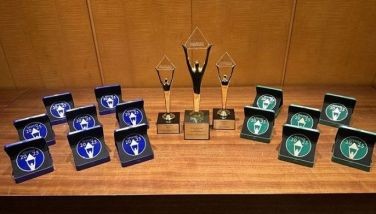What’s in a cauldron?

A cauldron symbolizes magical transformation, prosperity and endless feasting. We’ve heard the tales from the ancient times a god’s whisper can turn leaves and twigs into a bountiful harvest.
Remember the story of the Dagda, the deity from Celtic mythology? The Dagda was a strong bearded god gifted with special powers. He is said to have a mace which can kill and can bring back life at the same time, so say the ancient tales.
He had magic, wisdom, and strength.
More importantly, he had a giant cauldron that was always overflowing with food and could never be emptied.
On the other hand and in another world, a country of 100 million builds a cauldron to show everyone how great and almighty it is.
It is quite a cauldron with a P50 million tab — P4.4 million for the design, P13.4 million for the foundation, and P32 million for the construction.
The controversial cauldron, as you all might know by now, is the stadium cauldron for the upcoming Southeast Asian (SEA) Games which we are hosting this year.
Found outside the New Clark City Athletics Stadium in Clark, it will keep the SEA Games’ symbolic flame burning for 11 days.
Rolling out the red carpet
We like rolling out the red carpet. The Filipino hospitality is well known around the world. When we invite guests to our homes, we welcome them with pleasure. We prepare for days, cleaning the house and bringing out the finest cutlery. Sometimes it comes at the expense of other more important things, but we don’t mind.
Therefore, it shouldn’t come as a surprise that we agreed to host the 2019 Southeast Asian Games with a P50 million cauldron in the stadium.
National pride after all is at stake, says House Speaker Alan Peter Cayetano, head of the SEA Games committee.
An empty cauldron
Unlike Dagda’s cauldron, however, ours isn’t overflowing at all. It is in fact empty, as empty as the real life cauldrons of roughly 20 million Filipinos who live below the poverty line.
There’s no national pride in building something so grandiose when income inequality in the country is still as wide and disparate as can be.
Or when we can’t even provide enough budget to support our national athletes.
Support for the athletes
In a post on Twitter, Gretchen Malalad, a retired member of the Philippine karate team who won three consecutive gold medals in past SEA Games, said it well:
“The athletes don’t need a P50 million cauldron. Come on! yang kaldero na yan dapat nilagay sa budget ng kalderong pangkain! Idagdag niyo na lang sana sa food budget ng atleta. O di kaya para sa training,” she says.
Gretchen knows this well. She herself experienced the difficulty that athletes go through because of tight budget.
In a moving article she wrote for Rappler titled “How Gretchen Malalad turned Italian gig to gold” which was published on Nov. 13, Gretchen narrated the struggles of training abroad because of the lack of budget for national athletes.
“I won three SEA Games gold medals in karate, but fighting in the mat was not the hard part. While training and competing abroad, I was mistaken for a prostitute, worked part time to buy food, and lived in one of the most lawless parts of Italy ran by the mafia,” she says.
Together with other athletes, she trained in Italy and lived in Castel Volturno, Napoli, “one of the toughest areas in Italy where prostitution thrived and a place boon for local mobsters.”
They were training for the 2005 SEA Games.
Gretchen had to work part time in an internet shop in Italy so she could buy food fit for athletes.
“I realized that even before we got to Europe, the food we were eating in the Philippines was also not adapted for athletes. I tried to remember what the drawer below my bunk bed in the athlete’s dormitory in Pasig contained: Lucky Me instant noodles, Skyflakes, Century tuna, 555 sardines, hopia, tamarind candies and oral rehydration tablets, which I drank as a substitute for Gatorade. I was a class A athlete earning P11,000 a month and that was the only food I could afford to nourish myself.”
It is, therefore, a travesty to spend lavishly on a cauldron without giving the same attention and support to our national athletes. Outside sports, we shouldn’t forget the more basic ones that could also use more funds — social services such as health and education.
If that cauldron was overflowing with food and everything we need, as in the ancient Celtic times, then P50 million is a small price to pay.
But hey, this isn’t the cauldron of the great Celtic god Dagda. It’s nothing but an empty giant metal pot and come Nov. 30, P50 million in taxpayers’ money will literally go up in flames.
Iris Gonzales’ email address is eyesgonzales@gmail.com. Follow her on Twitter @eyesgonzales. Column archives at eyesgonzales.com
- Latest
- Trending


























